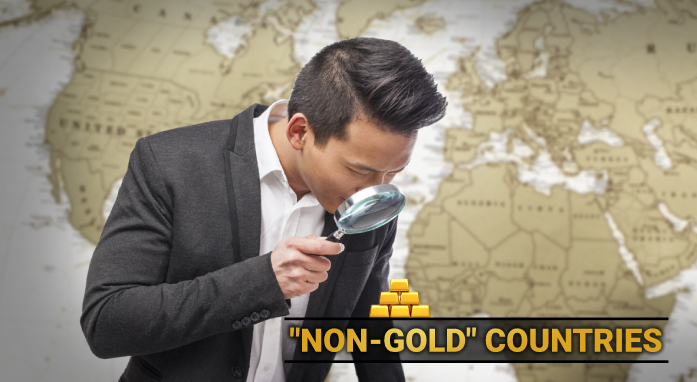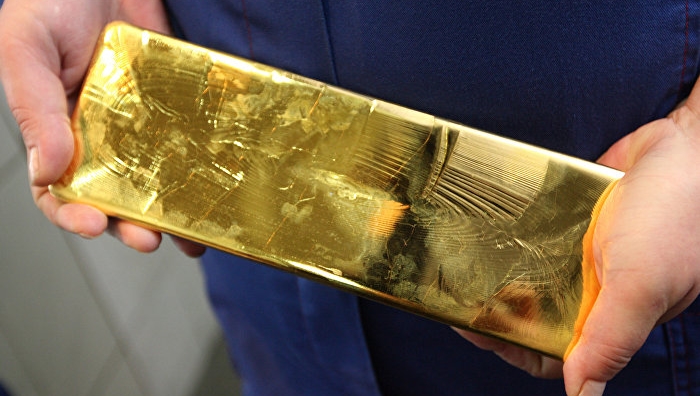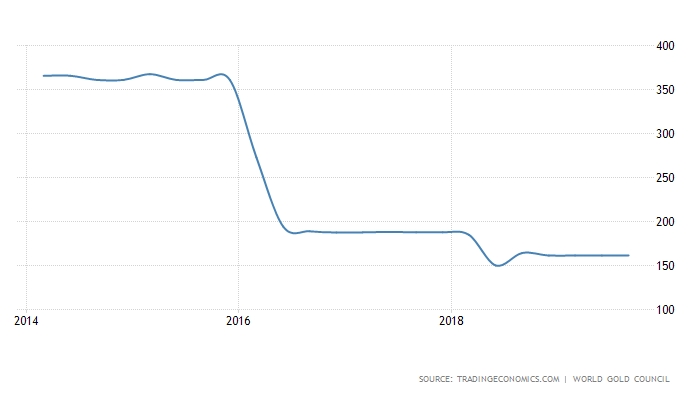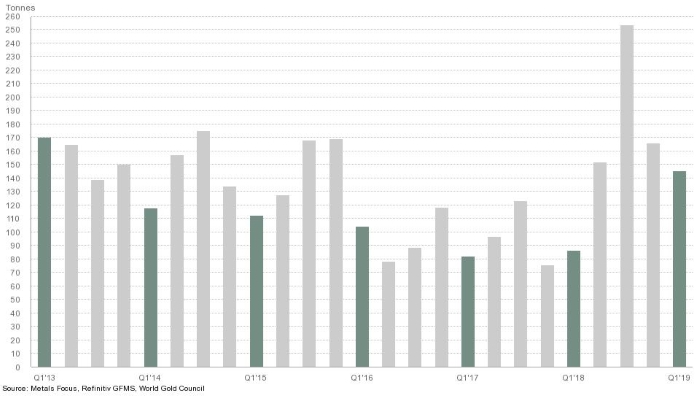Gold reserve — the last hope in fighting a crisis

The World Gold Council has provided data on purchases of the yellow metal by various states as well as on their gold reserves. Russia, China, Ecuador, Turkey and India are steadily building up their precious metal reserves.
But some other countries cannot boast of impressive growth of gold reserves thus setting a sort of anti-records.
"Non-gold" countries
The states with modest gold reserves, according to the World Gold Council, for the first half of 2019, include, for example:
- Guinea — 1.5 tons;
- Albania — 2.07 tons;
- Yemen — 1.56 tons;
- Haiti — 1.81 tons;
- Trinidad and Tobago — 1.94 tons.
The three countries on this list — Guinea, Yemen, and Haiti — are among the poorest countries in the world, with an underdeveloped economy and a high poverty level.
One ingot for the whole country
The Central Bank of Estonia has revealed the secret of gold in its vault — there is only one ingot of the precious metal there!
Geographical information: Estonia is a small country in Northern Europe, located on the eastern coast of the Baltic Sea. The Republic of Estonia is a member of the European Union and a participant of the Schengen Agreement.
It is known that the gold ingot was made 97 years ago, its weight is 11 kilograms. It is considered equivalent to museum exhibits since the purity of the metal does not correspond to the standards adopted by financial market.

According to Fabio Filipozzi, the representative of the Central Bank of Estonia, the worth of the illiquid ingot amounts to 500 thousand dollars.
Estonia's gold reserve is only 248.82 kilograms, and it is stored outside the country, in New York.
Venezuela is losing the yellow metal
The country has been in a deep crisis for many years now. Trying to avoid total collapse, Venezuela expressed a wish to return the part of its gold reserve stored in the Bank of England. British bankers' refusal to return the precious reserve deprived the treasury of the Latin American state of 1.2 billion dollars.
To keep the economy afloat and ensure the inflow of foreign currency to the country's budget, the authorities started selling out the gold stored within the country. In the first half of 2019, the Bolivarian Republic sold 30 tons of the yellow metal.
Venezuela's precious metal reserve amounts to 161 tons of gold.

The chart shows a sharp decline in the country's gold reserve over a five-year period.
The proper strategy
The global economy is quite unstable. Governments of the developed countries are aware of the growing financial risks, and they follow a sensible strategy — they increase precious metal reserves to safely get through hard times.
By increasing reserves of the yellow metal, the leading powers of the world strengthen their positions in the international arena and accumulate reserve asset that will not be devalued even when a crisis strikes.
For the first time in six years, the record of gold purchases was broken!
In the first quarter of 2019, the Central banks of the countries worldwide purchased 145.5 tons of the precious metal. This is 68% higher than the last year's indicator, and it is a six-year record.

The chart of the World Gold Council shows the purchases of the Central banks from the first quarter of 2013 to the first quarter of 2019.
Gold is the main guarantor of any country's welfare.
Gold is rising in price, confirming its status as one of the most sought-after assets in the world.
Gold price per ounce as of September 16, 2019 is $1,503.
The precious stock remains a "lifeline" in the event of economic collapse.
Brexit is coming: will gold save Britain?

![[VIDEO] Young investors choose gold
[VIDEO] Young investors choose gold](https://f01.gig-os.com/74/2c/cc/2b/74/742ccc2b74d465054d6aed797b9de6a1_5.jpg?1)
![[VIDEO] The US legalizes payments in gold [VIDEO] The US legalizes payments in gold](https://f01.gig-os.com/cf/b1/ba/70/55/cfb1ba7055dd2524218f5aabd01efea8_5.webp?1)
![[VIDEO] Record gold demand: market situation in Q1 2025
[VIDEO] Record gold demand: market situation in Q1 2025](https://f01.gig-os.com/0d/85/47/0b/15/0d85470b15a79bc2aabf122c0d401060_5.webp?1)
![[VIDEO] Investors in Asia are buying up gold!
[VIDEO] Investors in Asia are buying up gold!](https://f01.gig-os.com/45/45/84/6f/73/4545846f738945417567ffd2f6f163bb_5.webp?1)
![[VIDEO] Gold price has increased 9 times since the early 2000s!
[VIDEO] Gold price has increased 9 times since the early 2000s!](https://f01.gig-os.com/47/af/07/eb/bb/47af07ebbb01542f14c0aae36a81f1c0_5.webp?1)
![[VIDEO] The US is urgently increasing gold mining — what’s going on? [VIDEO] The US is urgently increasing gold mining — what’s going on?](https://f01.gig-os.com/43/06/89/4d/da/4306894dda97c98b6e595409af58b694_5.webp?1)
![[VIDEO] China sets trends in the global gold market
[VIDEO] China sets trends in the global gold market](https://f01.gig-os.com/5b/81/78/92/92/5b81789292d5e49f20ca7ca093a27cbe_5.jpg?1)
![[VIDEO] Central banks acquired a quarter of the world's gold!
[VIDEO] Central banks acquired a quarter of the world's gold!](https://f01.gig-os.com/81/2d/76/ff/b0/812d76ffb00ee75856059a67a872642c_5.webp?1)
![[VIDEO] Gold: new records amid market volatility
[VIDEO] Gold: new records amid market volatility](https://f01.gig-os.com/03/8b/98/61/b7/038b9861b74be1ae5d57e56e2d2dc859_5.webp?1)
![[VIDEO] Depreciation of money: how to preserve capital? [VIDEO] Depreciation of money: how to preserve capital?](https://f01.gig-os.com/f9/05/87/f3/5d/f90587f35d2d7a1df8880c220372ab8b_5.webp?1)